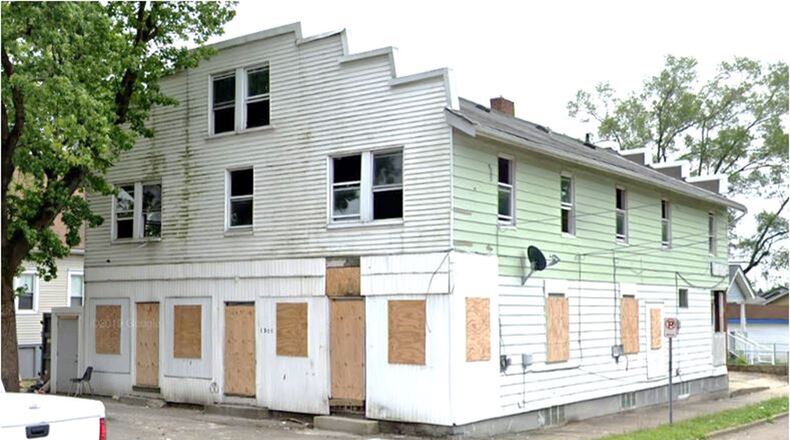“This project is in a business-zoned district, so residential is a conditional-use,” city Planning Director Liz Hayden said.
Because the property also has a history of crime- and health-related issues, city staff has been working closely with the building’s new owner, Hayden said. The city’s planning commission recommended council approve the conditional use, with more than a dozen conditions for the proposed redevelopment, which is to include two storefronts — probably an office and either a one- or two-person salon or a small convenience store.
The building previously had six apartments, two of them in the basement, which is against city ordinances. In a 4.5-year period through July, the building that is a block west of Ohio 4 was the site of 213 emergency dispatch calls, including for possible deaths, drug overdoses, drug complaints, arguments, thefts and trespassing.
The city’s development plan calls for development of Grand Boulevard into a commercial corridor because it is receiving increased traffic since the opening of South Hamilton Crossing in December of 2018. Traffic likely will increase further after a proposed roundabout is built at the Five Points intersection several blocks to the east.
Naab said he hopes the building’s development will attract renters who want proximity to grocery shopping and other nearby attractions, and other businesses will follow along Grand.
Hayden told council work was being done on the building prior to approval of the conditional use, and a stop-work order had to be used to stop construction, but that apparently was because of confusion.
“I would say that it is not intuitive that a building that was used for residential would need to get a conditional-use approval to be residential again,” she told Council Member Susan Vaughn, who asked about that. “… They maybe didn’t know.”
Meanwhile, Hayden told the council the Butler County Land Bank plans to give a building at 227 N. 11th St. to SELF (Support to Encourage Low-income Families). The county organization acquired the building and planned to tear it down, but when it sought to tear the building down, Hamilton’s Architectural Design Review Board rejected the request because it was in a historic district, Hayden said.
“We were lucky enough to connect with SELF, and SELF said they believe that this is a rehab-able building, that they can get into the hands of a future homeowner,” she said.
The council voted 5-0 to receive a report on the situation from the city’s administration. Mayor Pat Moeller and Council Member Robert Brown abstained, because they serve on the SELF board.
About the Author
